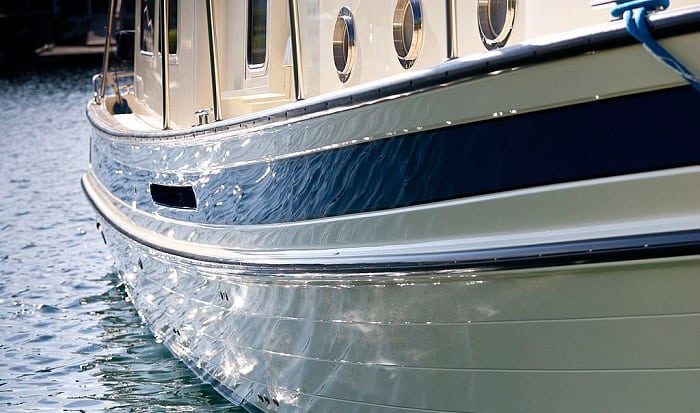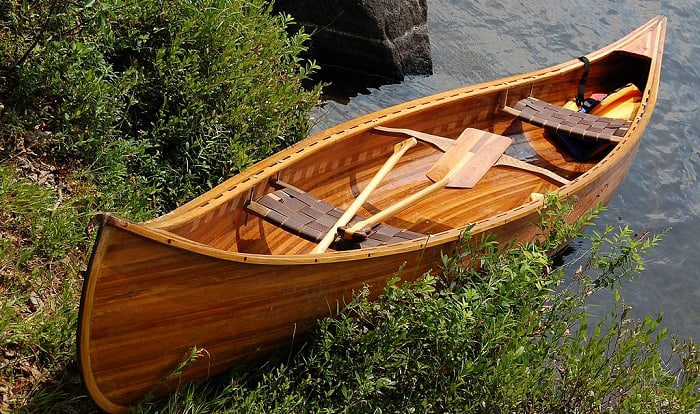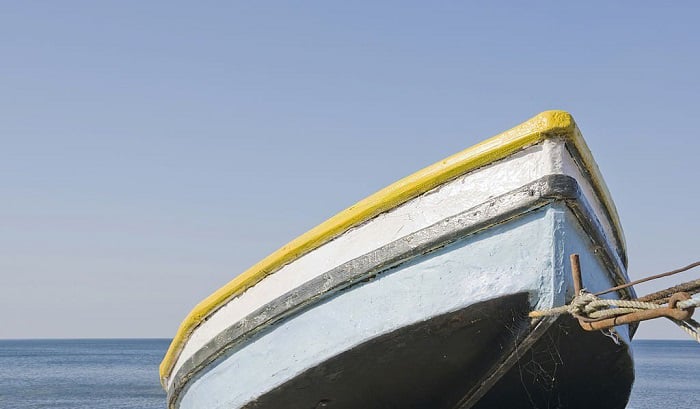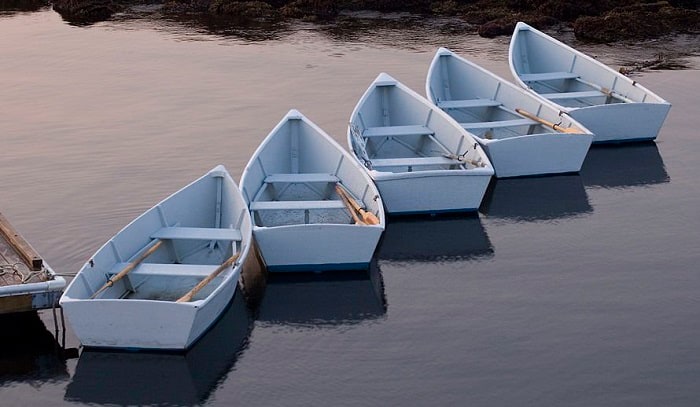Sometimes, when we encounter new words and terms, we readily assume their meaning based on their structure. If you thought the gunwale of a boat is a type of naval weapon… that’s already pushing it – nor is it something you shoot whales with.
You’ll find the answer to the question, “What is a gunwale on a boat?” far milder. When sailors refer to a ship gunwale, they’re talking about the upper reinforcing edge of a boat or ship’s hull. It serves various protective and strengthening purposes.
Its function is far from being simple, though, as you’ll find out by reading on.
Table of Contents
What is a Gunwale?
Also known as a gunnel (pronounced closer to the said spelling), a typical seafarer will define a gunwale as the top part of the hull that reinforces it – or, in even simpler terms, its rails. In order to not confuse it with sea mammals or a certain country that’s part of the UK, we need to dive into a bit of its etymology.
Its root word is wale, which can be traced back to the Middle English word wāle that means a welt.
Have you ever had a cut deep enough on your skin that a prominent ridge forms? In a way, that’s what a gunwale looks like upon closer inspection, and it stretches horizontally to accommodate the entire length of the vessel.
While I did say that it’s not an armament, the “gun” in the word is actually not without any martial connection.
After all, where are gunwales located on a boat? Aren’t they essentially above the gun deck of a typical warship? In fact, they can be designed to be tough enough to help the hull withstand the force of recoiling naval cannons.
What is It Made of?
Since it’s made for mostly protective purposes, expect it to come in durable materials like aluminum, vinyl, and white ash, especially in canoes. Conventionally, it’s made of hardwood like oak, maple, cherry, or mahogany.
Each one has its advantages and disadvantages, and what you choose is often dictated by what your hull is made of. Most hardwoods offer solid durability and can be oiled regularly to maintain their aesthetic appeal.
Synthetic materials like vinyl and aluminum also ensure maximum durability, often without needing maintenance at all.
What about design? Well, normally, a gunwale is thicker than the hull and protects it by placing two pieces of the wood or the other materials I said above between it.
The one positioned inside the boat is called an inwale while the one outside is referred to as the outwale. Woodworkers can freely experiment with more creative designs, as you’ll see in some of the intricate canoes out there.
What Purposes Does It Serve?
Now that we got the definition out of the way, let’s dive into a gunwale’s many advantages.
1. Lends protection in more ways than one.
For one, it’s positioned high enough on top of the hull’s edges, meaning it aids in keeping waves from splashing onto the deck. It’s essentially a part of the ship’s railing, too, so it can keep things and people from going overboard, especially when the seas and oceans get rocky.
Since it’s made with hardwearing materials, it also protects the upper portion of the hull. Lastly, especially in canoes, it can be designed so people can grab hold of it for support during emergencies or if they simply need it.
2. It helps to support and retain the shape of the boat.
This should be obvious by the way it covers the entire stretch of the hull in most boats and ships.
The fact that it lends to the structural soundness of a vessel highlights the vital role it plays. Overall, it adds to a boat’s durability this way, and when it comes to the harshness of the marine elements it’s exposed to, I say it’s a perfect addition for any vessel.
3. Can be constructed in such a way that it cancels noise.
Since it’s the top edge of the hull, the gunwale of a ship or something smaller like a canoe tends to come in contact with a lot of things. Paddles certainly knock on them often, which may cause unwanted noise.
That being said, if you use specific materials and wood trim that are quieter, like for example, white ash, this problem can be remedied. You never know when a wild animal may come near you while you’re happily boating and exploring – and you either don’t want to startle it away or attract its attention, right?
Conclusion
Every part of a boat or ship has an integral purpose. This discussion and detailed answer to the question, “What is a gunwale on a boat?” proves as much, especially now that you’re aware of its purposes for ship protection and structural soundness.
The more you become aware of a ship’s design, the more you’ll realize how technically sound it is. If you’re an aspiring sailor, it’s good that you’re dedicating yourself to knowing more about every essential part of your vessel.

“My intention from the first day establishing Boating Basics Online is to provide as much help as possible for boaters who want to experience a first safe and convenient trip. So feel free to join us and share your beautiful journeys to the sea!”




